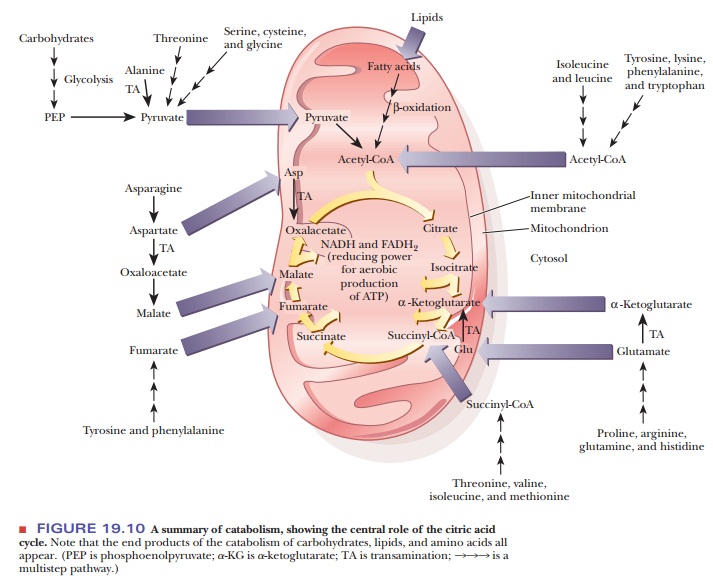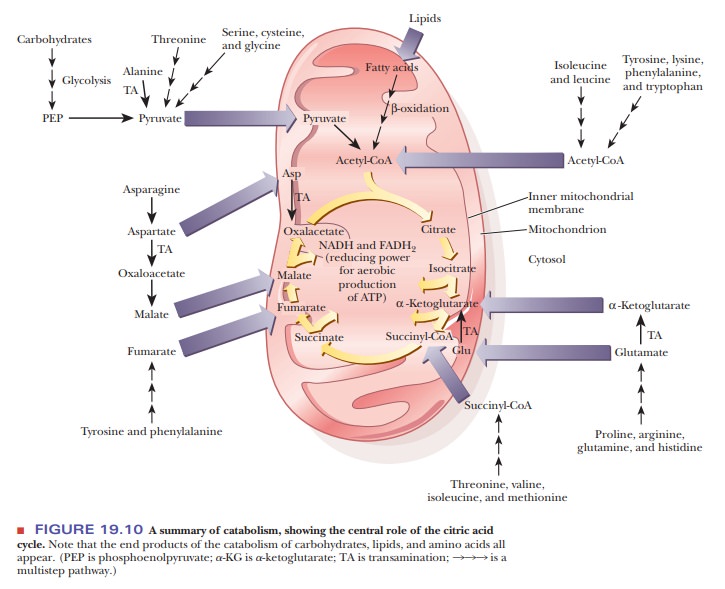Chapter: Biochemistry: The Citric Acid Cycle
The Citric Acid Cycle in Catabolism

The Citric Acid Cycle in
Catabolism
The nutrients taken in by an organism can include large molecules.
This observation is especially true in the case of animals, which ingest
polysaccharides and proteins, which are polymers, as well as lipids. Nucleic
acids constitute a very small percentage of the nutrients present in
foodstuffs, and we shall not consider their catabolism.
The first step in the breakdown of nutrients is the degradation of
large mol-ecules to smaller ones. Polysaccharides are hydrolyzed by specific
enzymes to produce sugar monomers; an example is the breakdown of starch by
amylases. Lipases hydrolyze triacylglycerols to give fatty acids and glycerol.
Proteins are digested by proteases, with amino acids as the end products.
Sugars, fatty acids, and amino acids then enter their specific catabolic
pathways.

Figure 19.10 shows schematically the various catabolic pathways that feed into the citric acid cycle. The catabolic reactions occur in the cytosol; the citric acid cycle takes place in mitochondria. Many of the end products of catabolism cross the mitochondrial membrane and then participate in the citric acid cycle. This figure also shows the outline of pathways by which amino acids are con-verted to components of the citric acid cycle. Be sure to notice that sugars, fatty acids, and amino acids are all included in this overall catabolic scheme. Just as “all roads lead to Rome,” all pathways lead to the citric acid cycle.
Summary
All metabolic pathways are related, and all of them operate
simultaneously.
In catabolic pathways, nutrients, many of which are macromolecules,
are broken down to smaller molecules, such as sugars, fatty acids, and amino
acids.
Small molecules are processed further, and the end products of
catabolism frequently enter the citric acid cycle, which plays a key role in
metabolism.
Related Topics